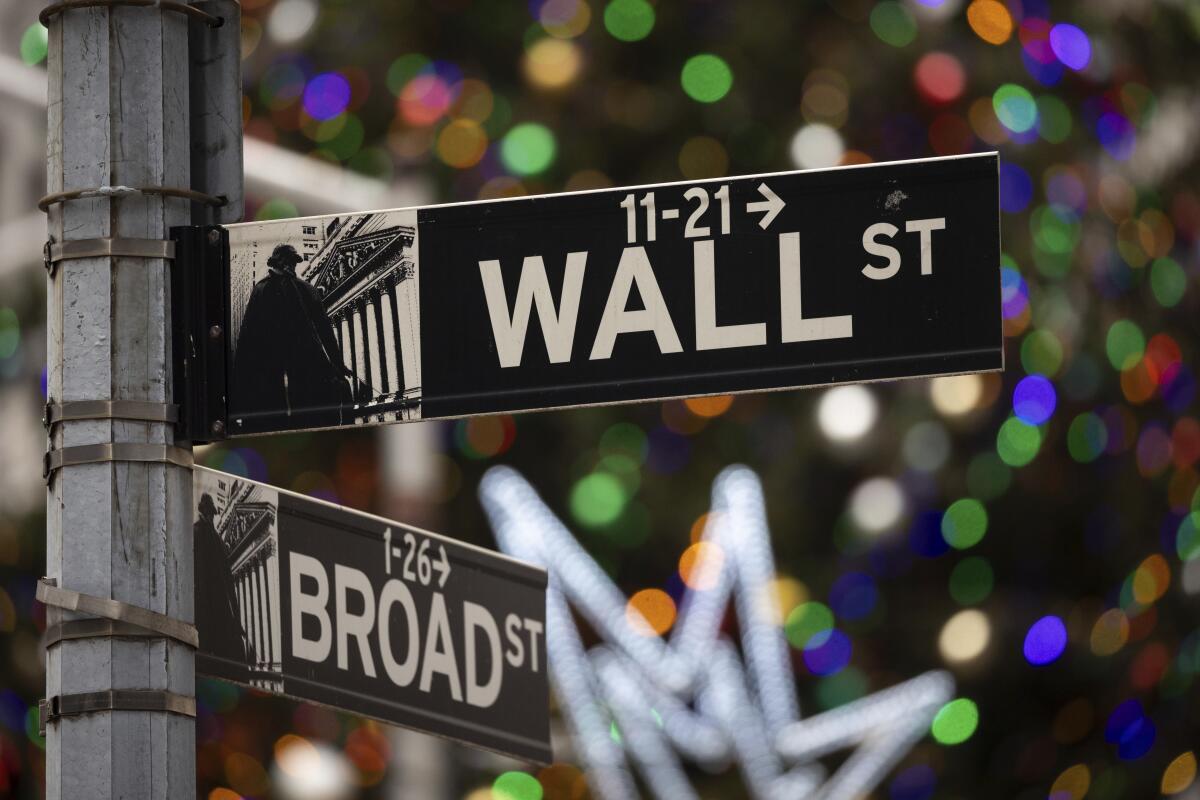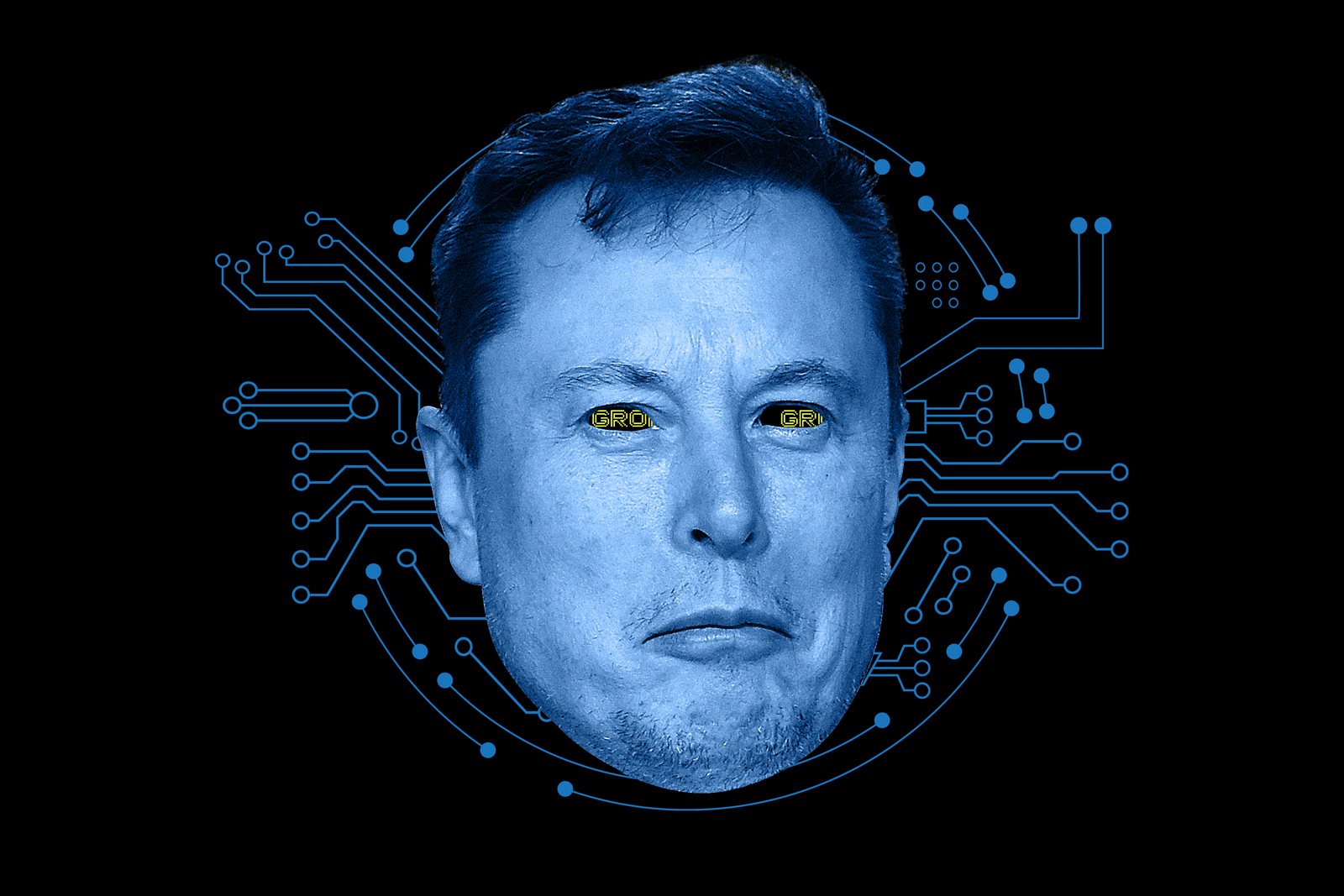Wall Street rises again as the Dow ticks to another record

- Share via
Most of Wall Street rose Thursday after its big rally from the day before on excitement that several cuts to interest rates may indeed be coming next year.
The Standard & Poor’s 500 index gained 0.3% to pull within 1.6% of its all-time high set early last year. The Dow Jones industrial average climbed 0.4% to set a record for a second straight day, and the Nasdaq composite rose 0.2%.
Moderna jumped 9.2% after reporting encouraging data from a study of its treatment for high-risk melanoma that’s used with Merck’s Keytruda. That helped offset a 6.3% slump for Adobe, which gave a forecast for 2024 revenue that fell short of analysts’ expectations.
Stocks broadly have been shooting higher since October on hopes that inflation has cooled enough for the Federal Reserve to not only stop its market-rattling interest rate increases but also to even begin considering cutting them. Those hopes strengthened Wednesday after the Fed held its main interest rate steady and said the federal funds rate is probably already at or near its peak.
More importantly, the Fed also released projections showing its median official expects the federal funds rate to fall next year by more than earlier expected. Wall Street loves lower interest rates because they can goose prices for investments and relax the pressure on the economy and financial system.
Questions that have swirled this year — Will my boss try to replace my job with AI? Can my work really be automated away? — are about to become a whole lot more urgent and existential.
Other central banks also met this week, and hopes are rising that the pivot toward easier conditions for financial markets and the economy is global. Both the European Central Bank and Bank of England decided to keep their main interest rates unchanged Thursday, though each gave signals that cuts are not imminent.
Treasury yields sank further in the bond market as traders bet on a series of cuts to interest rates coming in 2024.
The yield on the 10-year Treasury fell to 3.96% from 4.03% late Wednesday. It was above 5% in October, at its highest level since 2007, and the sharp drop since then has given the stock market a big boost.
Owners of office parks, hotels and other real estate, which benefit from lower interest rates, were some of Thursday’s bigger winners. Real-estate stocks rose 2.6% for one of the best gains among the 11 sectors that make up the S&P 500, including a 7.2% jump for Boston Properties.
Banks were also strong. High interest rates have hurt the industry’s players a rung or two in size below the behemoth banks and helped cause three high-profile collapses earlier this year. Lower interest rates could ease the pressure.
Zions Bancorp, Fifth Third Bancorp, Comerica and Regions Financial all jumped more than 8%.
All told, the S&P 500 rose 12.46 points to 4,719.55. The Dow gained 158.11 points to 37,248.35, and the Nasdaq climbed 27.59 points to 14,761.56.
But the rally for stocks and drop for Treasury yields seem to be banking on the Federal Reserve pulling off what was considered a long shot not long ago.
The hope is that the Fed can manage its interest-rate policy exactly right: First, by slowing the economy and hurting investment prices enough through high interest rates to snuff out inflation, and then by making conditions easier at the right time to prevent the economy from slowing too much and sliding into a painful recession.
The Times sat down — or logged in, rather — to interview Grok, Elon Musk’s new AI chatbot, about the billionaire tech mogul and his various controversies.
That’s still not assured, as both Fed officials and cautious investors are warning.
One threat is that the economy stays too hot, which would keep upward pressure on inflation and could force the Fed to at least keep rates high for longer or hike them again.
A couple of reports Thursday indicated the economy may be stronger than economists had forecast. One showed U.S. shoppers spent more at retailers in November than October, when economists were forecasting a decline. Another report said fewer U.S. workers applied for jobless benefits last week, a sign of a resilient job market.
Treasury yields briefly undid some of their declines after the reports. But traders are still betting on a better than 3-in-4 chance that the Federal Reserve will cut its main interest rate by at least 1.50 percentage points next year, according to data from CME Group. That’s double what the median Fed official is expecting.
“Our view is that the market is pricing too fast a pace of cuts,” said Solita Marcelli, chief investment officer for the Americas at UBS Global Wealth Management.
Politicians and the press bought into the panic over organized shoplifting, but the source of the alarming statistic now admits that it was a lie.
Critics have said the amount of rate cuts that traders are expecting is unlikely unless the U.S. economy falls into a recession.
In stock markets abroad, indexes rallied across Europe and were mixed in Asia. Japan’s Nikkei 225 slumped 0.7% as hopes for U.S. rate cuts drove the value of the dollar down against the yen. That hurts Japanese exporters.
AP writers Matt Ott and Elaine Kurtenbach contributed to this report.
More to Read
Inside the business of entertainment
The Wide Shot brings you news, analysis and insights on everything from streaming wars to production — and what it all means for the future.
You may occasionally receive promotional content from the Los Angeles Times.













